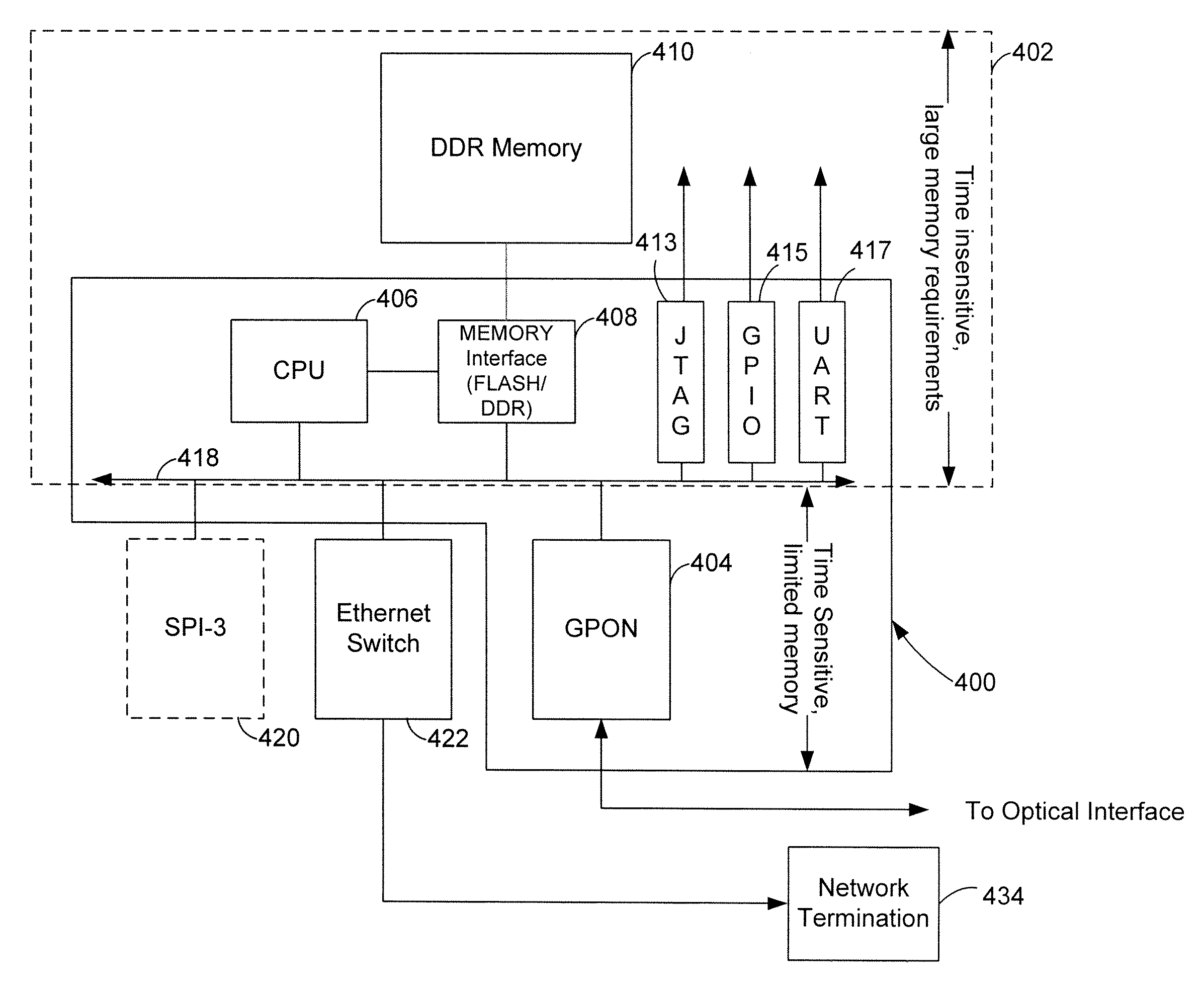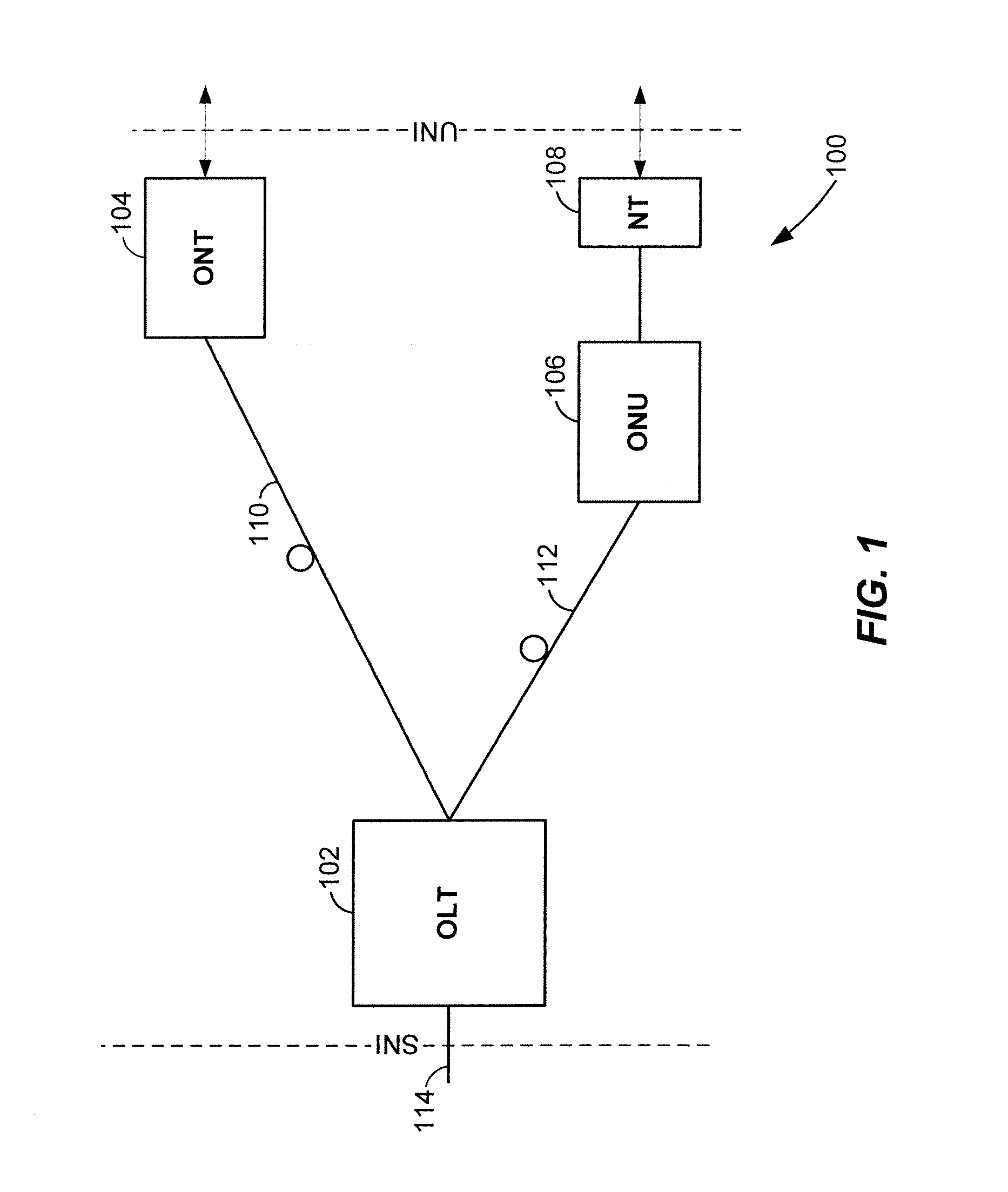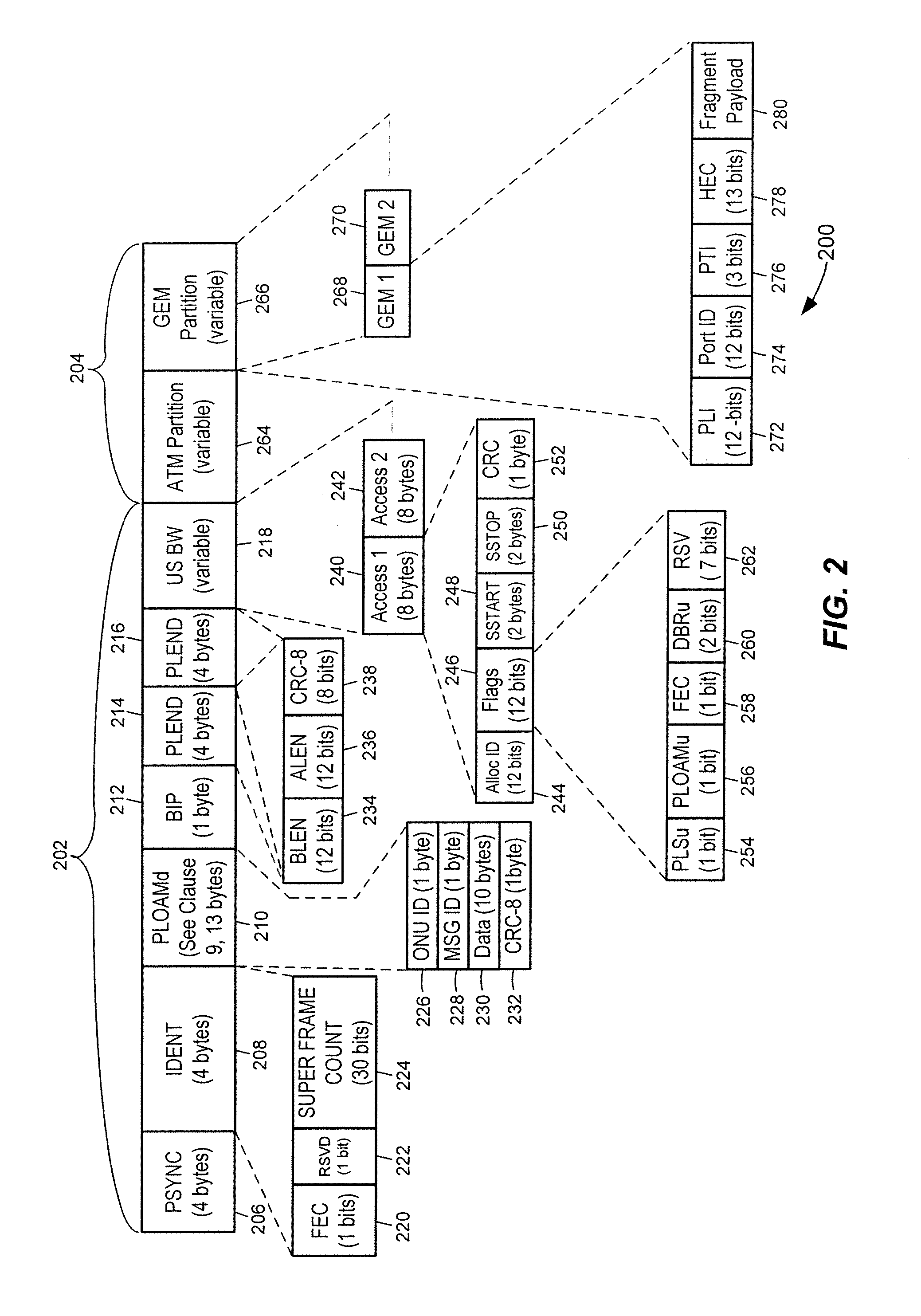Optical line termination in a passive optical network
a passive optical network and optical line technology, applied in data switching networks, multiplex communication, digital transmission, etc., can solve the problems of non-time sensitive functions such as added delay and jitter versus time-sensitive functions
- Summary
- Abstract
- Description
- Claims
- Application Information
AI Technical Summary
Benefits of technology
Problems solved by technology
Method used
Image
Examples
Embodiment Construction
[0015]FIG. 1 is a block diagram of an example passive optical network 100 that includes an optical line termination (OLT) 102 coupled to an optical network terminal (ONT) 104 and an optical network unit (ONU) 106. Generally, the passive optical network 100 is a point-to-multipoint network, where the OLT 102 is provided as a service node interface, for example at a server or service provider, such as an internet service provider, television service provider, telephony service provider or other provider of network services. The ONT 104 and / or ONU 106 are each provided as an user node interface, for example at or near an end user. While the OLT 102 may be provided at the service provider site, the OLT 102 may also be provided as one of several OLTs within a distributed network, where each OLT is associated with corresponding ONUs 106 and / or ONTs 104.
[0016]As shown in FIG. 1, the OLT 102 is communicatively coupled to the ONT 104 via an optical fiber 110, and communicatively coupled to t...
PUM
 Login to View More
Login to View More Abstract
Description
Claims
Application Information
 Login to View More
Login to View More - R&D
- Intellectual Property
- Life Sciences
- Materials
- Tech Scout
- Unparalleled Data Quality
- Higher Quality Content
- 60% Fewer Hallucinations
Browse by: Latest US Patents, China's latest patents, Technical Efficacy Thesaurus, Application Domain, Technology Topic, Popular Technical Reports.
© 2025 PatSnap. All rights reserved.Legal|Privacy policy|Modern Slavery Act Transparency Statement|Sitemap|About US| Contact US: help@patsnap.com



